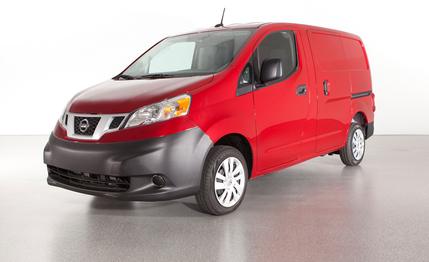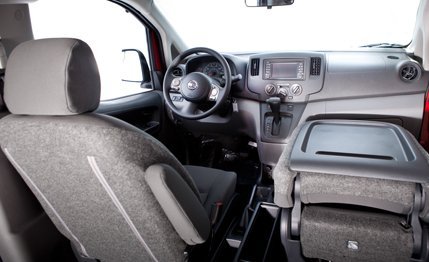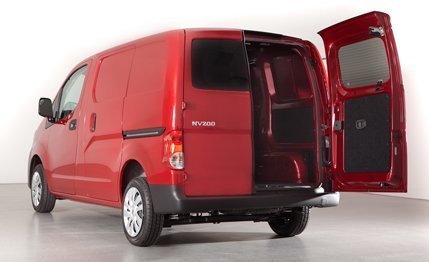
 First Drive Review
First Drive Review
It’s difficult to imagine a cargo-van war, so let’s think of this as a skirmish in the city streets, with FedEx guys, plumbers, florists, and the like wielding the combatants in this contest: Nissan’s NV200 compact cargo van versus Ford’s Transit Connect.
Ground rules: Forget the big Nissan NV cargo and passenger vans, the body-on-frame workhorses that take on the likes of the Mercedes Sprinter, large Ford Transit, and upcoming Ram ProMaster. This is the smaller unibody NV200, the civilian edition of the Nissan Taxi of Tomorrow that hits N.Y.C.’s streets this fall. Keep in mind that this is a rapidly changing conflict, as the Ford Transit Connect we see today will be replaced with an all-new version in early 2014.
It’s All about the Box
There’s nothing pretty, fancy, or delicate about these commercial vehicles on which bumpers really are meant to fend off damage. There’s a nose for the drivetrain, a cabin for two, and then, abruptly, plenty of square footage of painted metal and all sorts of braces and reinforcements with lots of holes. It all looks a bit higgledy-piggledy, but it’s a well-planned layout for affixing shelves, bins, or brackets—whatever gets the job done. In the NV200, that would mean working within 122.7 cubic feet of cargo area in a vehicle that measures 186.3 inches nose to tail and rolls on a 115.2-inch wheelbase. The maximum cargo width is 54.8 inches; max cargo height is 53.0 inches. The payload capacity is 1500 pounds. This is in the same ballpark as the current Transit Connect.


You get access to the back via sliding doors on both sides or through rear swing-out doors split 40/60; the driver’s-side rear door is shorter so it doesn’t stick out into traffic quite so far when open. There are no side windows in the cargo area, but you can opt for glass at the back.
Currently, Nissan hasn’t announced any plans to field a passenger version of the NV200, but with the taxi nearing production, Nissan could have a civilian-hauler version ready quickly if Ford’s 5-to-7-passenger 2014 Transit Connect wagon is a success. As it is, the Nissan has seating for two in carlike surroundings, with a dashboard that could be from an automobile. Ditto on the standard and optional equipment, including airbags, sound systems, and voice-command navigation. Seat materials are commercial use ready (how about vinyl wear patches?) and so, too, is the handy forward-folding passenger seatback with indentations for a computer and, by contrast, a pencil.
Pickup and Delivery
Nissan backs the 2.0-liter four and its 131 horsepower and 139 lb-ft of torque with a CVT. This might bring groans if the NV200 were a car, but in the dollars-and-sense commercial world, where Nissan can claim 24 mpg city and 25 mpg highway, it’s less important. We barely noticed the CVT in San Diego city traffic, instead being more aware of traits like the relatively nimble (for a van) 36.7-foot turning circle and ease of maneuverability in tight spots, both augmented by the light steering. Our NV200 was empty of racks and shelves and had no trouble matching traffic acceleration and speeds on city streets or the freeway. You needn’t be a certified truck driver to handle the NV200, and we wish something like this had been available years ago when all vans were bigger and more clumsy.


Pricing starts at $20,835, and as the NV200 is built in free-trade Mexico, Nissan needn’t pull any tricks like Ford does. The blue-oval brand imports its Turkish-built Transit Connect with multiple rows of seats and then removes the rear chairs at the port of entry to avoid the 25-percent “chicken tax” tariff on commercial vehicles.
No doubt about it, a new age of more-fuel-efficient, nimble cargo vans is upon us. Nissan, which was not a player in the cargo-van segment until very recently, is intent on carrying its share of the freight.